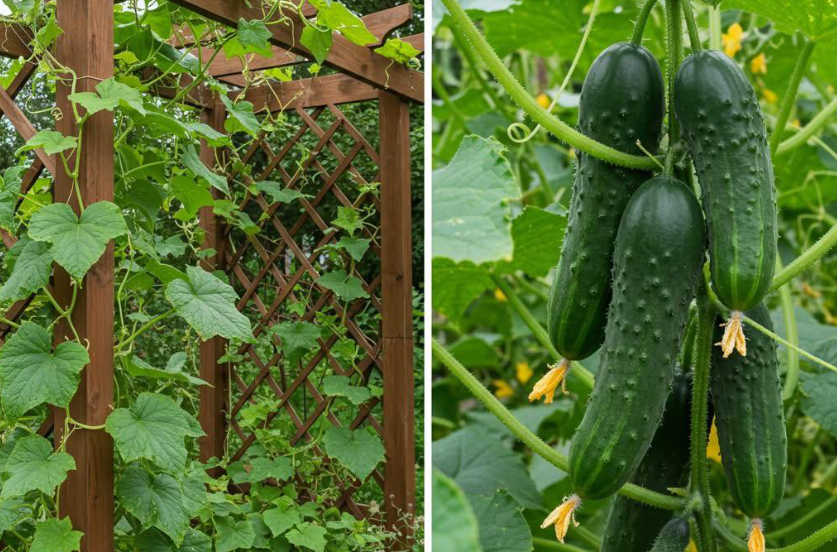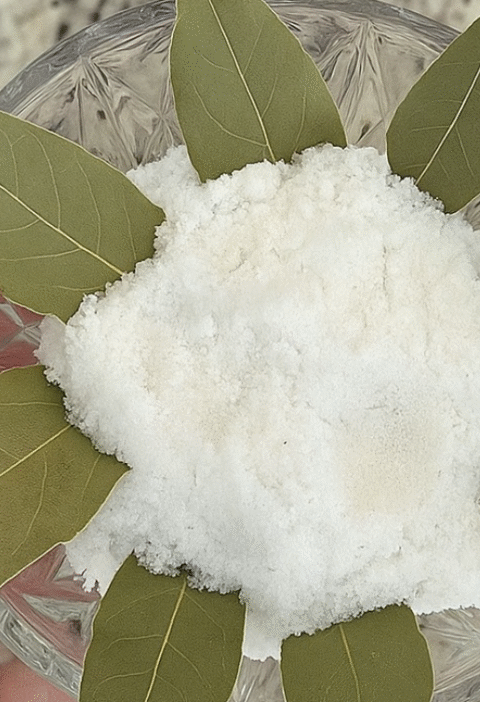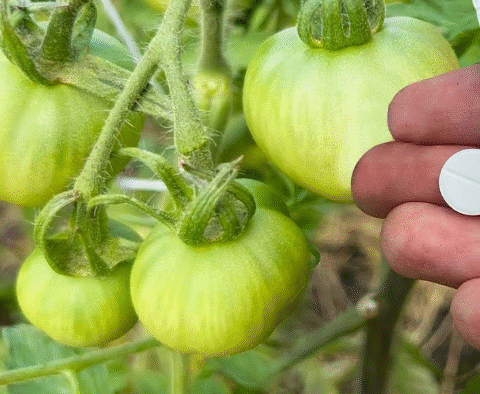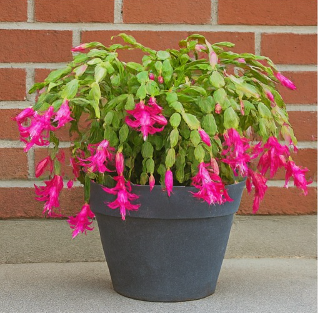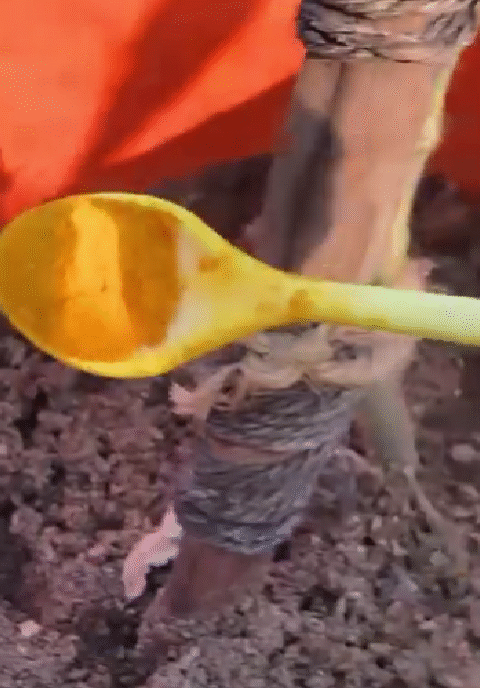Grow Cucumbers Vertically: Space‑Saving, High‑Yield Gardening Tips
Discover how to grow cucumbers vertically to make the most of limited garden space, ease harvesting, and enjoy juicy, tender cucumbers even in small areas. With thoughtful planning and tried-and-true techniques, vertical cucumber gardening is both practical and productive.
Choosing the Right Cucumber Variety 🌿
Selecting a cucumber variety suited to vertical growth is essential for a successful harvest. Vining types are optimal, as they produce long, fruit-laden vines that climb naturally on support structures.
Recommended varieties include:
- ‘Bushy Baby’ – compact vining cucumber ideal for trellises in tight spaces.
- ‘Tasty Green’ – disease-resistant and prolific on upright supports.
- ‘Spacemaster’ – bred for limited garden beds and responsive to vertical training.
Also consider purpose-specific cultivars:
- Pickling types like ‘Boston Pickling’ and ‘County Fair’
- Slicing varieties like ‘Marketmore 76’ and ‘Straight Eight’
- Snack cucumbers such as ‘Lemon’ or ‘Suyo Long’
disease resistance is key—as highlighted by horticulturist Dr. Leila Nour, “Choose cultivars labeled ‘disease resistant’ to help minimize issues like powdery mildew and bacterial wilt.”
Key takeaway: Choose compact, disease-resistant varieties suited to your intended use—whether slicing, pickling, or snacking—and optimized for vertical training.
Preparing the Growing Space
Container Selection
For container gardening, aim for a pot that comfortably holds 2–3 plants—typically around 20 gallons. Ensure it has plenty of drainage holes to prevent waterlogging.
Trellis & Support Systems
Types of vertical supports:
- Wall-mounted trellis or netting—perfect for patios or beds near structures
- Freestanding trellis—wires/string between posts for vine support
- Stakes or cages—suitable for smaller gardens or clustered plantings
Whatever the format, make sure the structure can support the weight as fruits develop by adding netting or extra ties under larger cucumbers, as advised by Prof. Mark Benson.
Soil & Compost Mix
Fill containers or beds with a high-quality vegetable mix amended with compost. For drainage, add sand or small pebbles at the base. Fill to just below the rim, then sow seeds in shallow furrows spaced per the seed packet instructions—typically 8–10 inches apart.
Expert tip: Use a soil temperature gauge—plant when soil is at least 60°F (15–16°C). Floriculture specialist Dr. Leila Nour adds, “Healthy soil with compost helps seedlings establish quickly and encourages root development.”
Planting and Training Cucumbers
Sowing Seeds
Plant seeds 1 inch (2.5 cm) deep, spaced about 3–4 inches apart. Rows in garden beds should be 4–6 feet apart to allow airflow and ease of access. Water gently after planting and keep soil evenly moist until germination, which typically occurs in 5–7 days.
Training the Vines
- Once seedlings reach ~6 inches tall, start gently tying main stems to your support with soft twine or plant clips.
- Continue to loosely train tendrils and side branches upward as the plant grows.
- Provide extra netting or tie wraps to support heavy fruit and prevent stem breakage.
Regular attention and guidance ensure vines remain upright and productive throughout the season.
Watering & Fertilizing
Cucumbers crave consistent moisture—water at least once or twice weekly, possibly more during extreme heat, aiming to keep soil moist but not soggy.
For fertilization:
- Apply a balanced organic fertilizer every two weeks when temperatures exceed 65 °F (18 °C).
- Caution: too much nitrogen leads to leafy, low-yield plants.
- In containers: liquid seaweed extract or fish emulsion diluted per package instructions every two weeks.
- In garden beds: side-dress with compost tea or worm castings if compost was added before planting.
🌱 According to Prof. Mark Benson: “Consistent, moderate nitrogen application builds stems and encourages flower-to-fruit transformation.”
Harvesting Cucumbers
Harvest your cucumbers when they’re firm, bright green, and roughly 6–8 inches long (size may vary slightly by variety). Harvesting too late often results in bitter, seedy fruit.
Harvest technique:
- Support the vine gently while cutting or twisting the fruit off just above the stem.
- Handle both fruit and plants carefully so you don’t tear leaves or stems.
Inspect fruits before eating for pests or disease spots—especially mildew or aphid presence—and remove affected produce promptly.
After each harvest, water and observe plants to promote continued fruit set until frost.
Nutrition & Health Benefits 🥒
| Measurement | Calories | Hydration | Vitamin C | Fiber | Potassium | Health Benefits |
|---|---|---|---|---|---|---|
| Per 100 g | 15 kcal | 95 % | 2.8 mg | 0.5 g | 147 mg | Hydrates, supports digestion, contributes antioxidants |
Cucumbers are low‑calorie, hydrating, and rich in antioxidants. Their beneficial trace nutrients support digestion and skin health—perfect for a fresh snack or salad ingredient.
Expert Insights
“Vertical cucumber gardening not only saves space—it improves air circulation and fruit quality,” – Dr. Leila Nour
“Cucumbers thrive with consistent moisture and moderate fertilization—less foliage, more fruit,” – Prof. Mark Benson
10 FAQs: Frequently Asked Questions ❓
- How do I train cucumbers vertically?
Use trellis, stakes, netting, and gently tie stems—not too tight—to support upward growth. - How much spacing do cucumbers need?
Space 3–4 inches between plants; rows should be 4–6 feet apart for garden beds. - Trellis versus ground planting: what’s better?
Vining varieties perform better vertically; bush types can grow on ground without support. - When should I plant cucumbers?
Plant when soil reaches ~60 °F (late spring); soil thermometer recommended. - How often should I water?
Keep soil moist; water once or twice weekly or more during hot spells. - What fertilizer should I use?
Use balanced organic amendments every two weeks; avoid excess nitrogen. - How long until harvest?
Most varieties are ready ~60 days after planting (varies by climate/variety). - How to harvest without damaging vines?
Gently support the vine and either twist fruit off or cut stem just above it. - Do cucumbers need extra support?
Use netting or slings under heavy fruit to prevent breakage as they mature. - Any pests or disease tips?
Airflow cuts disease risk; inspect regularly and remove spotted or misshapen cucumbers.
Related Recipes & Culinary Ideas 🍽️
After harvesting abundant cucumbers, try these refreshing, garden-inspired recipes:
These ideas are from the website you specified—easy, fresh, and perfect for summer snacking!
Conclusion
Growing cucumbers vertically is a highly effective way to maximize garden space, improve air circulation, reduce disease, and simplify harvesting. With the right variety, well-prepared soil, consistent watering and fertilizing, and regular vine training, you’ll be rewarded with a high-yield, healthy cucumber crop.
By following these detailed steps—with support from gardening experts—and applying realistic safety and care tips, vertical cucumber gardening can be rewarding, easy, and enjoyable. Why wait? Start your vertical cucumber garden today and enjoy the fresh harvest all season long. 🥒🌱
